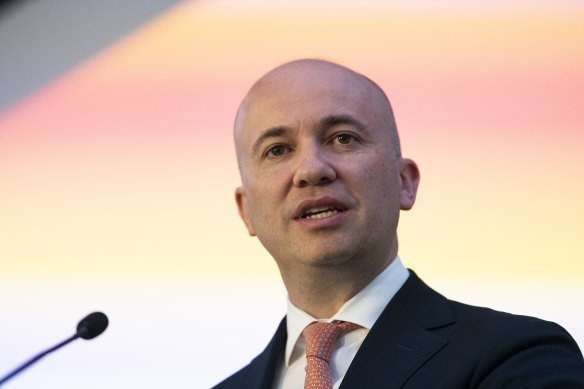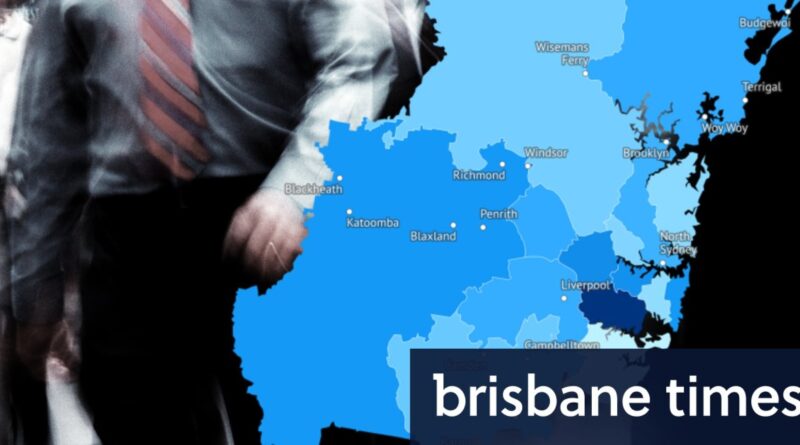Some regions lag as NSW unemployment plumbs historic monthly lows
Unemployment in NSW has fallen to a historic low of 3.3 per cent for three of the past four months, but the jobless rate is double that figure in parts of south-western Sydney and the state’s north coast.
The number of jobs in the state hit an all-time high 4.285 million in September after employment rose by 7000 in the month. NSW now has the lowest unemployment rate among the states, with Western Australia on 3.4 per cent and Victoria 3.5 per cent.
Separate, detailed employment figures published by the Bureau of Statistics show unemployment was around 2 per cent or lower in five of Sydney’s 15 labour market statistical regions in August.
The jobless rate was especially low in Sutherland (0.8 per cent), Central Sydney and Inner South (1.6 per cent) and the Northern Beaches (1.7 per cent).
But unemployment has been much higher in parts of south-western Sydney. The jobless rate in Sydney’s inner south-west, which includes Bankstown, Yagoona and Belmore, was 6.8 per cent in August. In the district called Sydney – South West, which takes in Fairfield, Liverpool and Bringelly, the August unemployment rate was 3.3 per cent, but the average annual rate for the 12 months to September was 6.9 per cent.
AMP chief economist Dr Shane Oliver said the economic disruptions caused by the pandemic, especially pronounced in parts of south-western Sydney, were still having an impact on employment.
“Some of the regional variations reflect how different areas were affected by the lockdowns,” he said.
Unemployment rates also vary outside of Sydney. The lowest jobless rate in regional NSW was in the Southern Highlands at just 1.7 per cent in August. Next lowest was the Central West region, Illawarra and the Mid North Coast (all 2.2 per cent).
However, in the Coffs Harbour-Grafton region, the unemployment rate was 6.6 per cent. Oliver said strong population growth in that area, and therefore a greater supply of labour, could be a factor contributing to the higher rate of joblessness.
Monthly, region-level unemployment rates can be subject to variability due to small survey samples.
The statewide unemployment rate of 3.3 per cent recorded in June, July and September was the lowest in NSW since monthly records began in 1978.
The rate of female participation in the NSW jobs market also rose to a near-record 61.8 per cent last month and is now entrenched above the pre-COVID level of 60.2 per cent.
Treasurer Matt Kean said the NSW jobs market was strong despite the challenges posed by climbing interest rates and inflation.
“Employment growth is booming in NSW, driven by a rise in part-time employment and the robust NSW economy,” he said.
But this year’s sharp increase in interest rates along with falling house prices and weaker consumer confidence is likely to eventually take a toll on NSW employment.

Treasurer Matt Kean claims employment growth is boomingCredit:Rhett Wyman/SMH
“It is only a matter of time before that happens,” Dr Oliver said. “The unemployment rate in NSW is bound to go higher than 3.3 per cent – I suspect that it will push up towards the national average over the next six to 12 months and go through 4.5 per cent sometime in the second half of next year. The debate is whether it then heads up to around 5 per cent.”
National unemployment forecasts will be updated in the Albanese Labor government’s first budget on Tuesday.
Despite the recent strength of employment a report by stockbroker CommSec shows the recent performance of the NSW economy ranks seventh out of the eight states and territories. According to the CommSec’s quarterly State of the States report, released today, Tasmania is Australia’s best-performing economy followed by Queensland and the ACT.
The Morning Edition newsletter is our guide to the day’s most important and interesting stories, analysis and insights. Sign up here.
Most Viewed in Business
Loading

